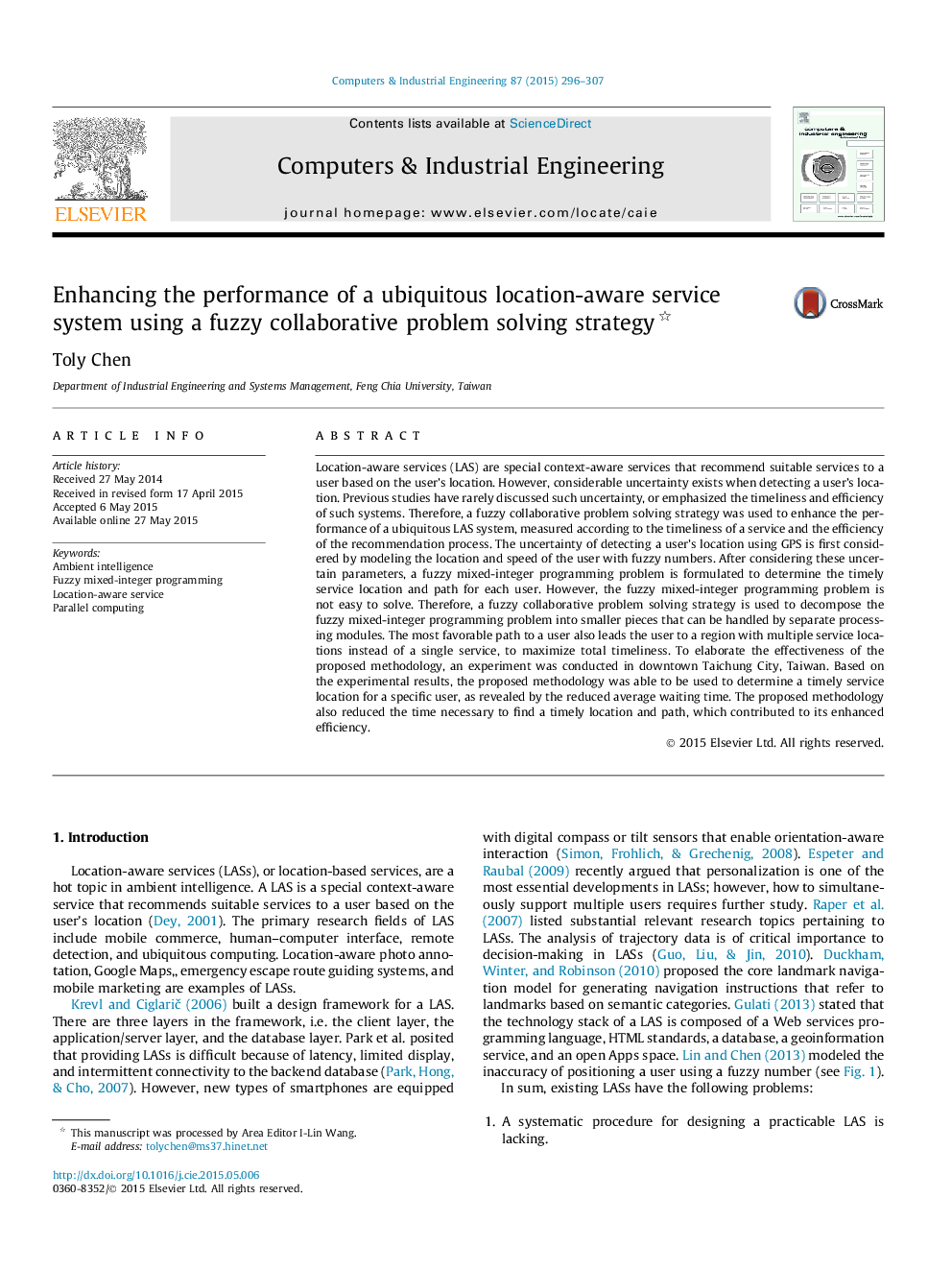| Article ID | Journal | Published Year | Pages | File Type |
|---|---|---|---|---|
| 1133564 | Computers & Industrial Engineering | 2015 | 12 Pages |
•A ubiquitous location-aware service system is built.•A fuzzy mixed-integer programming problem is formulated.•A fuzzy collaborative problem solving strategy is used to decompose the problem.•The system reduced the average waiting time of users.
Location-aware services (LAS) are special context-aware services that recommend suitable services to a user based on the user’s location. However, considerable uncertainty exists when detecting a user’s location. Previous studies have rarely discussed such uncertainty, or emphasized the timeliness and efficiency of such systems. Therefore, a fuzzy collaborative problem solving strategy was used to enhance the performance of a ubiquitous LAS system, measured according to the timeliness of a service and the efficiency of the recommendation process. The uncertainty of detecting a user’s location using GPS is first considered by modeling the location and speed of the user with fuzzy numbers. After considering these uncertain parameters, a fuzzy mixed-integer programming problem is formulated to determine the timely service location and path for each user. However, the fuzzy mixed-integer programming problem is not easy to solve. Therefore, a fuzzy collaborative problem solving strategy is used to decompose the fuzzy mixed-integer programming problem into smaller pieces that can be handled by separate processing modules. The most favorable path to a user also leads the user to a region with multiple service locations instead of a single service, to maximize total timeliness. To elaborate the effectiveness of the proposed methodology, an experiment was conducted in downtown Taichung City, Taiwan. Based on the experimental results, the proposed methodology was able to be used to determine a timely service location for a specific user, as revealed by the reduced average waiting time. The proposed methodology also reduced the time necessary to find a timely location and path, which contributed to its enhanced efficiency.
